
views
Using Skin Lightening Agents
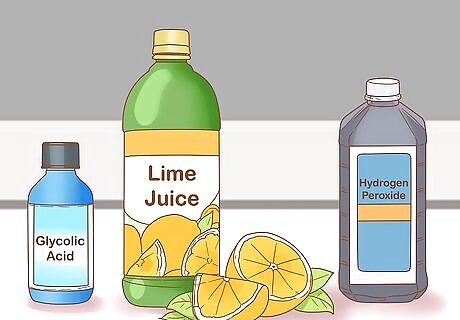
Use common household items to lighten your tattooed skin naturally. Lemon and lime juice, glycolic acid, and hydrogen peroxide can all produce mild bleaching action when applied directly to the skin. Chances are, you have one or more of these items sitting around in your pantry or medicine cabinet right now. Some holistic skincare experts also swear by the skin-lightening properties of undiluted essential oils, such as lavender oil. Avoid mixing multiple lightening agents. Not only will this not make them more effective, it could cause an unsafe chemical reaction. The actual effectiveness of topical skin lightening solutions is up for debate. If you decide to experiment with any of these substances, you'll be doing so at your own risk. There's a chance that they may not work permanently, or that they could result in scarring or similar damage.
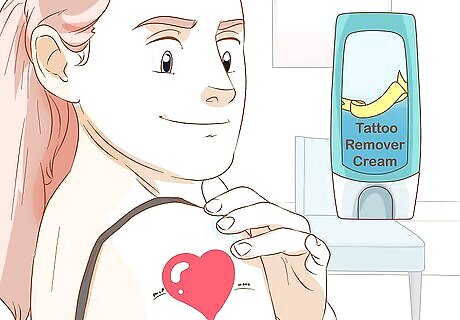
Try a tattoo remover cream if you’d rather use a commercial product. There are a number of creams, lotions, and gels on the market that claim to be able to rapidly fade subdermal ink. If you’re not interested in DIY solutions, consider giving one of these products a shot. Keep in mind, however, that there’s no hard evidence that they make much of a difference. Ask your tattoo artist if they have any recommendations for tattoo remover products that do what they’re advertised to do. Tattoo removers often contain harsh chemicals, and could lead to irritation or even permanent scarring if applied regularly or incorrectly.
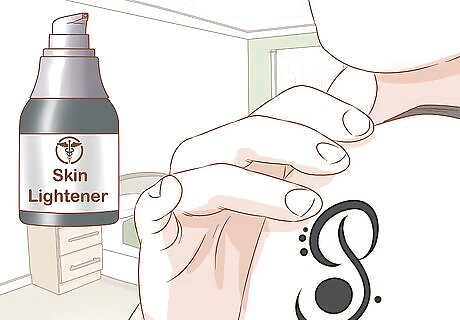
Rub your skin lightener of choice onto the tattoo until it’s fully absorbed. Saturate a washcloth, clean sponge, or folded strip of gauze with the liquid, then apply it to directly to your skin. You can do this by either blotting the area or covering the entire tattoo with the cloth, sponge, or gauze, if it’s small enough. What’s important is that the liquid makes contact with every part of the ink. For best results, allow your skin lightener to sit on your skin for 5-10 minutes after applying it. You may need a helping hand if you’re attempting to fade a tattoo on your back or another hard-to-reach spot.Tip: Test your lightening agent on a small, out-of-the-way patch of skin before applying it over a larger area to make sure you won’t react negatively to it.

Continue treating your tattoo 3-5 times a day until you see results. Get in the habit of applying your lightening agent at least twice throughout the course of the day—once in the morning and once in the evening. You’ll need to be persistent with your chosen home remedy if it’s to have any effect. Stop using a particular skin lightener if it begins to cause redness, irritation, blistering, or peeling. Even with continual applications, there’s a chance that your tattoo may not lose its vibrancy.
Exfoliating Tattooed Skin
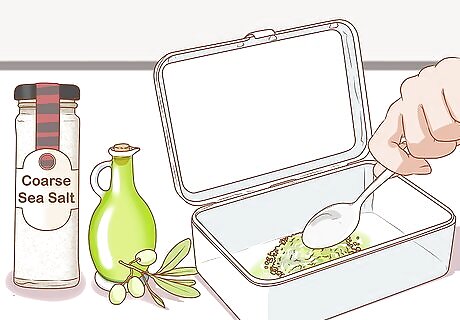
Mix up a basic homemade salt scrub. Combine ½ a cup (100 g) of coarse sea salt with ⁄4–⁄3 cup (59–79 mL) of olive, coconut, or almond oil in a small lidded container. Keep the container with the rest of your hygiene products, on your bedside table, or somewhere else where you’ll see it and remember to use it every day. If you like, you can also add a few drops of fragrant essential oils and some dried botanical elements to your salt scrub. This won’t affect its abrasive properties, but it will make it smell more pleasant. Salt scrubs are natural, easy to make, and highly effective as far as exfoliants go.

Pick up a gentle, vitamin-infused body scrub if you have sensitive skin. If you don’t like the idea of grinding a scratchy salt paste onto your extremities, you also have the option of buying a gentle commercial exfoliant designed specifically to nourish and protect skin. Along with abrasive elements, these products boast vitamins, minerals, and other key nutrients as main ingredients. Look for scrubs containing Vitamin C, which is especially good for maintaining soft, clear, glowing skin. Alternatively, you could try making your own nourishing body scrub using things like white or brown sugar, Epsom salts, shea butter, honey, coffee grounds, and aloe vera gel.
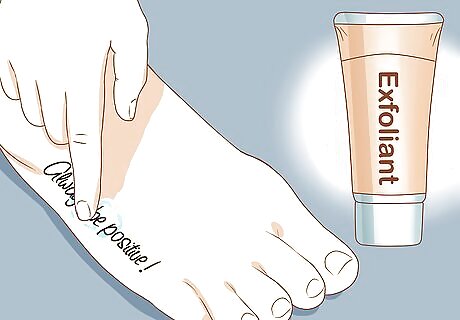
Apply a small amount of exfoliant directly to the tattoo. Scoop up a quarter-sized glob of your scrub with two fingers to start with and rub it onto the entire area. Smooth on additional exfoliant as needed to ensure that each part of the tattoo is covered with a thin layer. You may need to use quite a bit of scrub if the tattoo you’re trying to erase is particularly large.
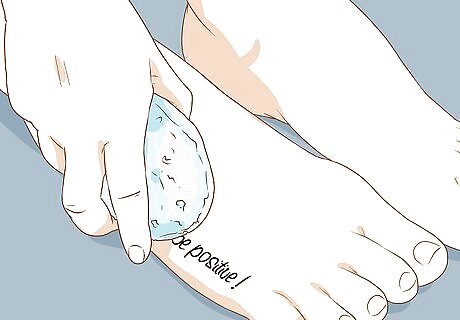
Massage the scrub into the tattoo vigorously using a pumice stone. Rather than trying to work the exfoliant in with your fingers, grab a pumice stone and rub it over the tattoo using small, circular motions. Apply light, steady pressure, and be careful not to scrub too hard. Do this for 30-60 seconds. Before you begin scrubbing, soak your pumice stone in a bowl of warm water. This will help it slide across your skin and cut down on unnecessary resistance. The pumice stone will cover a larger area and provide additional scouring power.Tip: The idea is to take off the outermost layer of skin a little at a time. Minor discomfort is normal, but if it hurts, try using a softer touch.
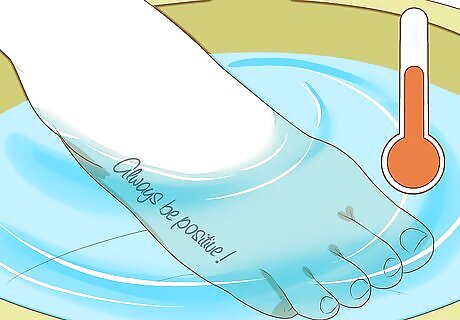
Rinse the area thoroughly with lukewarm water. Hold the exfoliated tattoo under a gentle stream to wash away the accumulated scrub and dead skin. Your skin will likely feel a little raw, so avoid using water that’s too hot, along with soaps or cleansers that might irritate or dry it out even more. It may be easier to hop in the shower if you can’t easily rinse your tattoo under the sink, or if you’re trying to fade multiple pieces at once. If you like, you can apply little moisturizer after exfoliating to soothe and protect your skin.
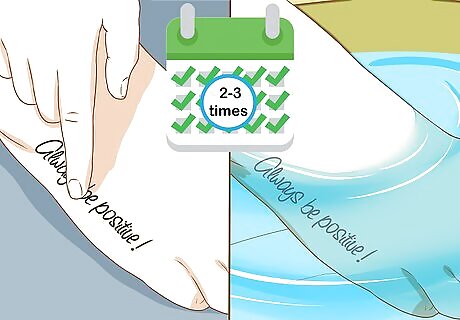
Repeat your exfoliation routine 2-3 times a day for about a month. In all likelihood, you’ll start to see a noticeable difference after a few weeks. Assuming you don’t, your only remaining option will be to talk to a dermatologist or plastic surgeon about a formal tattoo removal procedure. Discontinue treatment immediately if you experience severe or prolonged skin irritation.
Exploring Professional Solutions

Talk to your dermatologist about a laser removal procedure. Laser removal is the only method that has been clinically proven to reduce the appearance of tattoos. During the procedure, specially-trained technicians use concentrated streams of light to break up the ink sitting deep below the surface of the skin. If you want guaranteed, permanent results, it’s highly recommended that you save up your money for a course of laser treatment. While tattoo laser removal is extremely effective, it’s not quick or cheap—a single session can cost as much as $500, and in many cases it can take 2-6 sessions before you start to see a significant difference. Make sure you go to a licensed, reputable laser technician to get a tattoo removed.
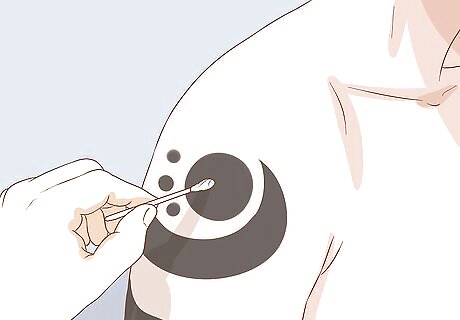
Receive a series of chemical peels to erase the tattoo gradually. This type of treatment is sometimes referred to as “chemical resurfacing.” The way it works is that highly acidic chemicals are applied directly to the top layer of skin, causing it to die. After it sloughs off, the area is given time to heal, eventually leaving behind smooth, clear skin. Chemical peels were the most popular tattoo removal method before the introduction of light-based procedures. Even so, reports vary as to how well they work. These treatments are not without risk. Possible complications include severe chemical burns and permanent scarring.
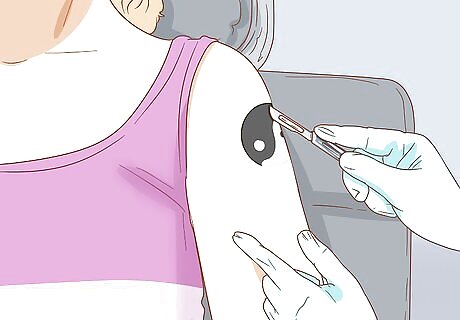
Undergo surgery to have the tattoo partially removed. With traditional surgery, plastic surgeons actually cut out the layers of skin sitting on top of the embedded ink. The tattoo will no longer be as visible once new skin has grown in its place. Surgery can successfully fade tattoos to some degree, but in many cases surgeons aren’t safely able to cut deep enough to extract the majority of the ink. Like chemical peels it’s possible for a surgical operation to leave scars, bumps, discoloration, and other imperfections.




















Comments
0 comment